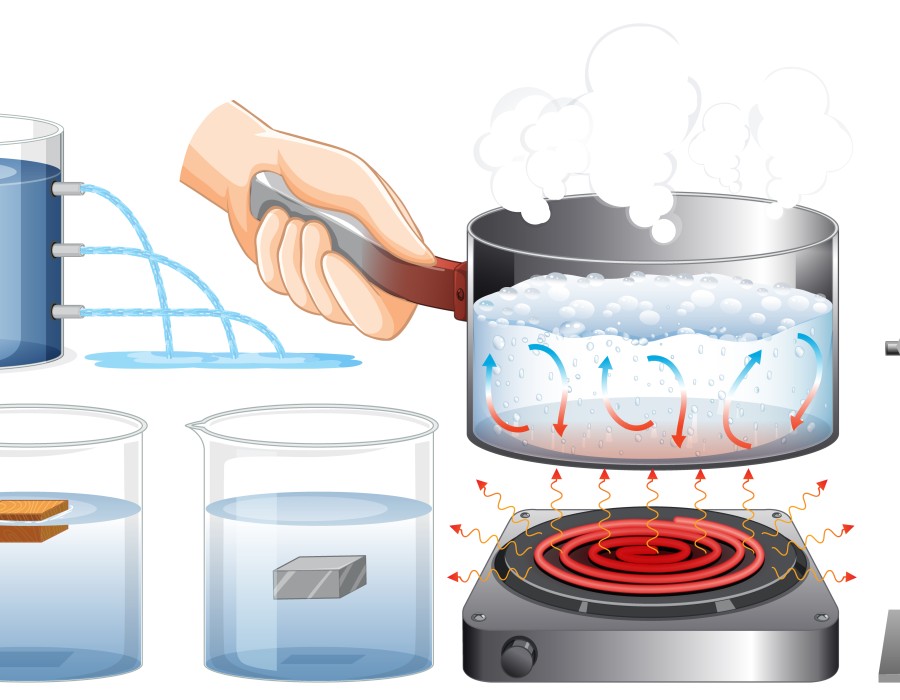In an increasingly digitalized era, the latent threat of electromagnetic interference (EMI) persists, with the potential to interrupt the precise flow of electrons within our electronic devices. Whether it's the subtle vibrations of smartphones in our pockets or the constant hum of computers on our desks, the accuracy of signal flow is critical and vulnerable to unwanted electromagnetic waves.
Physical Vapor Deposition (PVD) is an essential element in shielding electronic components, working quietly yet effectively to provide an imperceptible shield against the disruptive effects of Electromagnetic Interference (EMI).
Understanding EMI
Before delving into PVD, it's crucial to grasp the nature of EMI Interference. Originating from various sources such as radio waves emitted by devices and power lines, these electromagnetic waves induce unwanted currents in electronic circuits. The consequences can be seen in the form of garbled data transmissions, erratic device behavior, or even complete circuit malfunctions.
The impact of EMI usually manifest as:
- Data errors and corruption
- Malfunctions and performance issues
- Reduced lifespan and damage to devices
- PVD: The Defender's Arsenal
Insights into EMI
Physical Vapor Deposition (PVD) is a versatile technology employed to prevent Electromagnetic Interference (EMI) by creating a protective barrier that mitigates the impact of unwanted electromagnetic waves on electronic devices.
Here's a breakdown of the process:
- The Source: Heat or bombard a target material, typically a metal, to vaporize its atoms.
- The Journey: Vaporized atoms traverse through a vacuum chamber.
- The Coating: Atoms condense on the target surface, forming a thin, uniform metal film.
This seemingly straightforward process carries significant impact. The deposited metal film acts as a barrier, reflecting and absorbing electromagnetic waves before they can interfere with the delicate electronics beneath.
Why PVD Excels: Advantages Over Traditional Methods
PVD outshines traditional EMI shielding methods such as metal enclosures or paint coatings due to several key advantages:
- Conformal Coverage: PVD films adeptly cover complex shapes and intricate features.
- Lightweight and Thin: In contrast to bulky metal enclosures, PVD films are thin and lightweight, adding minimal weight or size to devices.
- Highly Customizable: The ability to choose metal type and film thickness allows for tailoring shielding properties for specific frequencies and applications.
- Durable and Corrosion-Resistant: PVD films are robust and resistant to corrosion, ensuring prolonged protection against EMI.
Real-World Applications: PVD in Action
PVD is already a pivotal player in shielding electronics across diverse industries:
- Consumer Electronics: Devices such as mobile phones, laptops, wearables, and even household appliances rely on PVD coatings for reliable operation.
- Automotive: Electronic control units, sensors, and wiring harnesses benefit from PVD's lightweight and conformal shielding.
- Aerospace: Satellites and critical flight systems utilize PVD to shield sensitive electronics from harsh environments and EMI.
- Medical Devices: PVD technology safeguards implantable devices and MRI equipment from electromagnetic interference.
The Future of PVD: Evolutionary Trends
Physical Vapor Deposition (PVD) technology is on a continual evolution, driven by advancements in materials science, engineering innovations, and the demand for enhanced performance in various industries. Here, we explore key future trends that are likely to shape the trajectory of PVD technology.
1. Nanocomposite Coatings
- Performance Boost: PVD's future might see nanocomposite coatings, enhancing hardness, wear resistance, and overall durability.
- Customization: Tailoring properties for specific applications through nanoparticle integration.
2. Advanced Deposition Techniques
- Efficiency Focus: Anticipated developments include high-throughput PVD for faster, large-scale film deposition.
- Precision Control: Integration of Atomic Layer Deposition (ALD) with PVD for atomic-level film thickness control.
3. Multi-Layered Structures
- Effective EMI Shielding: Future PVD trends may involve creating multi-layered structures for highly effective, broadband electromagnetic interference (EMI) shielding.
- Versatility: Strategic stacking of layers to address diverse industry performance needs.
4. Environmentally Friendly Processes
- Green PVD: The future may witness a shift towards eco-friendly PVD processes with reduced energy consumption and environmental impact.
- Waste Reduction: Advances in deposition and recycling practices to minimize PVD process waste.
Conclusion
Physical Vapor Deposition is a reliable defense against the disruptive effects of Electromagnetic Interference and offers a lightweight, durable, and highly customizable solution for ensuring the reliable and efficient operation of electronics, both now and in the future. The next time you use your phone or switch on your laptop, recognize the invisible shield at work, thanks to the precision of PVD technology!





Comments